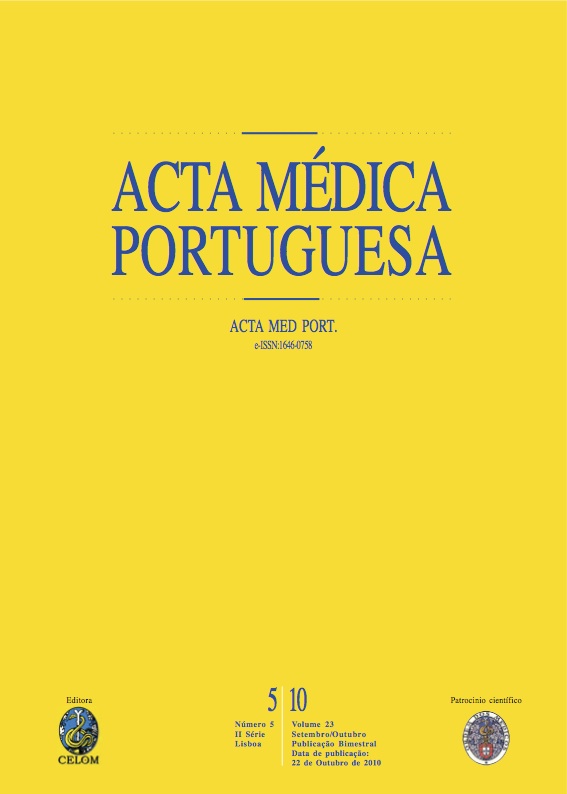Avaliação da qualidade de cuidados numa consulta de diabetes.
DOI:
https://doi.org/10.20344/amp.709Resumo
Type 2 Diabetes Mellitus affects an increasing number of people throughout the world. Several studies have shown that it is possible to prevent and minimize type 2 diabetes complications, be it treated appropriately over time. This study aimed to determine the quality of care provided to type 2 diabetic patients in our institution, through metabolic control and risk factors evaluation. Subjects and methods: We reviewed the medical records of 776 type 2 diabetic patients, followed at our outpatient clinic between 1998-2004. RESULTS: A total of 588 patients were included in the study, with a mean age of 66,8 ± 27,2 years. 58% were men. HbA1c levels averaged 7,2 ± 1,6. 57% had HbA1c = 7%. 25,3% met the target blood pressure of 130/80 mmHg; 48% met the goal LDL cholesterol level < 100 and 80% < 130 mg/dl. 6,8% of patients met the combined ADA goal for BP, LDL and HbA1c. Concerning therapeutic regimens: 71,5% used oral hypoglycaemic agents (OAD) alone (52,1% of these were using 2 or more agents); 28,5% were treated with insulin (16,2% in combination with OAD). 52,1% of the patients were anti-aggregated with aspirin. CONCLUSIONS: The metabolic control (HbA1c) and LDL values were favourable in our patients sample, comparing to other studies. The percentage of patients treated to the recommended BP of 130/80 mmHg is consistent with the literature. Only 6,8% of patients met the combined ADA goal for BP, LDL and HbA1c. Despite our comparable results to published data, we would like to highlight the difficulty to accomplish international recommendations to metabolic and risk factors control in clinical practice and the necessity of an aggressive approach to diabetes treatment.Downloads
Downloads
Como Citar
Edição
Secção
Licença
Todos os artigos publicados na AMP são de acesso aberto e cumprem os requisitos das agências de financiamento ou instituições académicas. Relativamente à utilização por terceiros a AMP rege-se pelos termos da licença Creative Commons ‘Atribuição – Uso Não-Comercial – (CC-BY-NC)’.
É da responsabilidade do autor obter permissão para reproduzir figuras, tabelas, etc., de outras publicações. Após a aceitação de um artigo, os autores serão convidados a preencher uma “Declaração de Responsabilidade Autoral e Partilha de Direitos de Autor “(http://www.actamedicaportuguesa.com/info/AMP-NormasPublicacao.pdf) e a “Declaração de Potenciais Conflitos de Interesse” (http://www.icmje.org/conflicts-of-interest) do ICMJE. Será enviado um e-mail ao autor correspondente, confirmando a receção do manuscrito.
Após a publicação, os autores ficam autorizados a disponibilizar os seus artigos em repositórios das suas instituições de origem, desde que mencionem sempre onde foram publicados e de acordo com a licença Creative Commons









